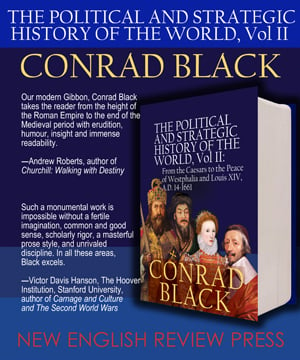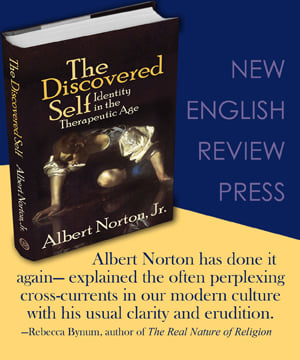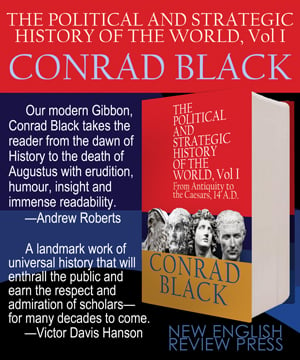by Hugh Fitzgerald (Aug. 2007)
Each person takes a sheet of paper and a No. 2 pencil or pen. He has ten minutes to write as many pairs of names as he can. These are the“doubles” which give the game its name. These names must somehow be linked in the mind of the person (hereinafter “the Compiler”) who writes them down. Some will be linked merely by some element or figure of sound, so that a certain similarity in the first names, or the last names, or the structure of the names, make one think, almost involuntarily, of the second once the first has been thought of.
Now the party’s gentil organisateur (hereinafter “The Host”) collects the lists. The Host will now read each list in the following manner. He will take one list, and read the entire contents, taking care to stop after every pair of linked names (hereinafter “the Doubles”). He will then, at each pause, ask each of the others, that is everyone present (hereinafter known as “the Participants”), except the Compiler of that particular list, to suggest reasons why the Compiler deemed this pair of names so linkable. Sometimes the link will be obvious. Sometimes it will be very obscure. Often there will be several reasons, some of them factual, some of them downright dreamy, some very obscure but making sense once they are made plain, why Name A and Name B form a legitimiate “double.” Ideally there will be all kinds of different reasons, taking into account many different kinds of considerations. The whole point and fun of the game consists in the imaginative and knowledgeable attempt by Participants to figure out what it was that made not any Compiler, but this particular Compiler, pair these particular two names.
The more that each Participant has stored away in his brain, and can bring wittily to bear on the matter, the more likely it is that the reasons offered, even if they turn out not to be the right ones, or turn out to be only part of the answer, will amuse and instruct, provide profit and pleasure. At the end of the animated reading-cum-attempted explanation of each item on the first list, the Compiler of that list (who should be taking some notes on who offered what reason) will explain who was right, who wrong, and anything else he has to add by way of explanation as to why A made him think almost automatically of B. Then do the same with the second list, and so on.
A particularly desirable feature of this game are its non-obvious, potentially epithalamic properties. For it forces each Participant (each of whom is also required to be a Compiler) to demonstrate intelligence, knowledge, humor, and wit. Thus the game of Doubles is an ideal activity for all occasions. The usual occasion, when one is just hoping to make life more rather than less interesting for a few hours. And the unusual occasion (which is becoming more usual), when with all of society’s little battalions permanently demobbed, one has to go out into the big world without a filtering intermediary, to find a suitable date or mate, and has so little time – which happens to be money, as you know – to spare, and wants to find out quickly, if only to eliminate from the running, what the story is with Miss X or Mr. Y. Call it speed-dating with a library card.
Sound and sight correspondences generally will not be enough, though it is one of the main elements to start with before you get going. Rudolph Guiliani should not make you think of Salvatore Giuliano, nor Hillary Clinton make you think of Edmond Hillary, nor Romney the politician entitle you to pair him, without more, with Romney the painter. General Boulanger does not make anyone think of Nadia Boulanger. (And don’t put beans up your nose.) But there will always be exceptions to that rule. The main point is to offer pairs that will be seen, once the Compiler has explained, somehow very right, in some cases funnily and even inevitably right. And the whole effect will be in the reasons, subtle and obvious, offered about each of the names in each pair. Jokes are also allowed, so that some of the pairs may be entirely phony but also full of meaning. However, in this setting the joke “doubles” must be explained. No one should go home disgruntled or confused.
Each Participant should, in the ten minutes allotted (more time would seem, in such a convivial setting, intolerably interminable), come up with as many pairs of “doubles” as he can. By way of demonstration, I compiled my own list, which is appended below. I broke my own rule, because I found that even typing at top speed I couldn’t complete all the names that came to mind in less than 30 minutes (by the old church clock), which was when I cut myself off, deeming that the absolute time limit I thought I should observe. Awareness of the likely audience of this website probably led me to skew the “doubles” in favor of the English and the academic, though I am not English and not academic. The list is offered merely as an example to those who like the idea of this game, but who at this point may find themselves in a group with others who are a bit reluctant to compile lists themselves, who want to try it only when they feel they have got the hang of it. In order to kick things off, this list is offered so that others may use whatever parts of it they wish, at their own cotter’s-Saturday-night gatherings, and try to explain to each other what that absent Compiler must surely have had in mind.
Here’s that list of “Doubles”:
Stephen Crane and Hart Crane
Sacha Guitry and Sacha Chorny
Tommy Lee Jones and Billy Bob Thornton
Bix Beiderbecke and Bunny Berigan
John Suckling and Richard Lovelace
Linda Lovelace and Linda Ronstadt
Ilf and Petrov
Bernard DeVoto and Wallace Stegner
Issy Bonn and Pinky Lee
Li Po and
Verlaine and Rimbaud
Tasso and Ariosto
Dosso Dossi and Betto Betti
Joan Littlewood and Joan Greenwood
Alain Delon and Johnny Hallyday
Billie Holiday and Judy Holiday
Toto and the King of
Peregrine Worsthorne and P. J. Wodehouse
Alan Coren and Sheridan Morley
Don Marquis and Don Hebold
Marshal Pilsudski and Admiral Horthy
Pisemsky and Gontcharov
Thomas Wentworth Higginson and James Russell Lowell
Richard Burton and Robert Burton
Robert Burton and Thomas Browne
Frank O’Connor and Sean O’Casey
Alice Adams and Alice Munro
Rosa Luxemburg and Kurt Liebknecht
Gerard Philippe and Leslie Howard
Muriel Spark and Iris Murdoch
Bing Crosby and Russ Colombo
Anna Karina and Anna Karenina
Nikolai Trubetzkoy and Baudoin de Courtenay
Arnaldo Momigliano and Rita Levi-Montalcino
Ernst Cassirer and Elias Canetti
Aby Warburg and Fritz Saxl
Josef Albers and Walter Gropius
Max Friedlaender and Erwin Panofsky
Leo Spitzer and Erich Auerbach
Salvador de Madariaga and Ortega y Gasset
Jakob Burckhardt and Jakob Bernays
Miguel Unamuno and Ortega y Gasset
Menendez Pidal and Menendez Pelayo
Damaso Alonso and Amerigo Castro
Silvia Ocampo and Victoria Ocampo
Flann O’Brien and Flannery O’Connor
Flannery O’Connor and Eudora Welty
Edwin O’Connor and Frank O’Connor
James Clarence Mangan and George Kennan
Virginia Lee Burton and Margaret Wise Brown
Quentin Crisp and Peter Quennell
Anjelica Huston and B. H. Traven
Doris Day and
Winston Churchill and Winston Churchill
Boris Vian and Frank O’Sullivan
Frank O’Sullivan and Flann O’Brien
Roy Campbell and William Plomer
Rev’d Kilvert and Gilbert White
Cornelia Otis Skinner and B. S. Skinner
B. S. Skinner and Quentin Skinner
Quentin Reynolds and Lowell Thomas
Thomas Middleton and Thomas Rowley
Fanny Kemble and Fanny Burney
Edmund Kean and John MacReady
Andrey Platonov and Mikhail Bulgakov
Alain Chartier and Charles, Duc d’Orleans
Jacques Loeb and Jacques Cousteau
Max Planck and Max Perutz
Max Ascoli and Max Lerner
George Polya and Michael Polanyi
J. D. Salinger and J. D. Watson
J. D. Watson and Francis Crick
Francis Quarles and Bernard Quaritch
“Chinese” Wilson and “Chinese” Gordon
Sid Caesar and Carl Reiner
A.J. Ayer and D.J. Enright
George Moore and George Moore
The Walrus and the Carpenter
Lessing and Schiller
Al Jolson and Eddie Cantor
Martin Landau and Lev Landau
Rod Steiger and Anatoly Shteiger
William Arrowsmith and Martin Arrowsmith
Dorothy Thompson and Dorothy Parker
W. V. Quine and Sir Arthur Quiller-Couch
Sir Arthur Quiller-Couch and George Saintsbury
Sidney Hillman and David Dubinsky
Evariste Parny and Evariste Levi-Provencal
Alain and Alain Finkielkraut
Joshua Whatmough and John Wansbrough
H. D. Kraus and Karl Kraus
Kurt Weill and Kurt Godel
John Maynard Keynes and John Maynard Keyes
Dobchinsky and Bobchinsky
Tom and Jerry
Brian Vickers and Alistair Fowler
Radhakrishnan and Ramanujan
G. H. Hardy and Keir Hardie
Ernest Bevin and Aneurin Bevan
Hugh Gaitskill and Jo Grimond
Jean Jaurès and Jean Barois
André Gide and Roger Martin Du Gard
Ernest Dowson and Aubrey Beardsley
Wassily Leontieff and Abram Bergson
Leo Spitzer and Erich Auerbach
Enoch Powell and Lord Deming
Maurice Bowra and Gilbert Murray
Gilbert Murray and Oswyn Murray
Oswyn Murray and Jasper
Jasper
Rita Mae Brown and bell hooks
Robin Lane Fox and Peter Green
Jo Stafford and Harriet Hilliard
Charles Perrault and Madame De Genlis
Felix Faure and Edgar Faure
Pierre Mendes-France and Catulle Mendes
Catulle Mendes and Oscar Milosz
Time and Newsweek
Fidelity and Vanguard
Hedge-Schools and Hedge-Funds
Our Mutual Friend and Our Mutual Fund
Neville Chamberlain and
William Lyon Phelps and Chauncy Brewster Tinker
John Horne Tooke and John Hookham Frere
Alexandre Koyré and Alexandre Kojève
Marie Boroff and Max Beloff
Jean Seznec and Jean Starobinski
Lancelot Andrewes and Jeremy Taylor
Edward Teller and John von Neumann
Issur Danielovitch and Yul Brynner
Vladimir Dukelsky and Vernon Duke
Quentin Durward and Durward Kirby
Hugh Fitzgerald contributes regularly to The Iconoclast, our Community Blog. Click here to see all his contributions, on which comments are welcome.







